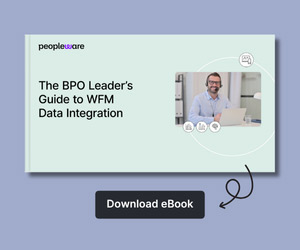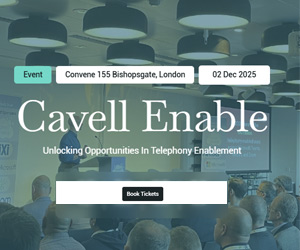Paul Stanczak at Enghouse explores how organisations can choose the right contact centre deployment model, cloud, on-premises, or hybrid.
Cloud adoption measured over the last decade shows just over 50% of organizations in the UK and US have migrated to the cloud, leaving nearly half either still on premises or maintaining a hybrid deployment.
This split highlights that no single model has become dominant: organizations continue to weigh their options based on compliance, cost, and business continuity priorities.
This reality makes one thing clear: choosing a contact centre deployment model isn’t about following industry trends. It’s about finding the setup that enables your business to scale efficiently, stay secure, and deliver the best possible results.
When Your Contact Centre Can’t Flex, Who Suffers?
You’re tasked with delivering seamless customer experiences across channels, geographies, and time zones.
But if your contact centre infrastructure can’t keep up (due to cost constraints, security concerns, or inflexible systems) it’s not just an IT problem. It’s a CX problem. And that means it’s also a business problem.
Whether you’re modernizing legacy systems, enabling remote teams, or scaling operations globally, one decision sits at the centre of it all: how you deploy your contact centre.
You have three options:
- Cloud
- On-Premises
- Hybrid
Each model offers real benefits – but only when matched to your unique operational needs and desired business outcomes. Let’s break down which fits best and why.
What is a Cloud Contact Centre?
A cloud contact centre is hosted and managed by a vendor in the cloud and accessed over the internet. It’s ideal for teams that work remotely or need fast scalability.
Businesses often choose cloud deployments because they scale fast: you can quickly add agents, features, or even entire locations without investing in new hardware apart from agent tools. The cost model is predictable too: instead of a larger upfront investment, you pay monthly as you go.
Deployment is typically quick, often measured in weeks depending on your setup. And since the system is web-based, agents can log in from anywhere, which is perfect for hybrid or remote teams. Updates happen automatically, so your platform is always up to date.
Of course, cloud isn’t a perfect fit for everyone. Subscription fees are ongoing, not one-and-done. Uptime depends on your internet connection, and some industries face strict compliance rules that may limit where data can be stored.
You also give up some direct control since your provider manages the infrastructure behind the scenes.
Best fit? Fast-moving organizations that value agility, remote flexibility, and the ability to scale without friction. Cloud adopters include startups, digital-first brands, and CX-forward teams.
What is an On-Premises Contact Centre?
An on-premises contact centre is hosted entirely on your own infrastructure. You control everything: the servers, the data and the upgrades.
For organizations in highly regulated industries like finance or healthcare, this level of control is usually a must. You decide how data is stored, how systems are secured, and how compliance is handled.
On-prem also makes sense for businesses that have already invested in infrastructure or have complex legacy systems tightly integrated with their operations.
Control does come with responsibilities: Updates require planning and downtime, maintenance falls on your IT team and scaling up may mean new hardware. All this takes time and budget which must be clearly tagged and built into your contact centre strategy.
Best fit? Organizations with strict data policies, dedicated IT resources, or compliance-heavy requirements.
What is a Hybrid Contact Centre?
A hybrid contact centre combines on-prem and cloud solutions, giving you the flexibility of cloud while keeping the control of on-prem.
Many organizations arrive at hybrid setups as part of a phased migration. Others use it to ensure uptime and resilience, keeping mission-critical systems on-prem while using the cloud for overflow or AI capabilities.
Hybrid lets you tailor spending too. You might invest capital in core infrastructure and use subscription services for seasonal or elastic workloads.
The trade-off? Complexity. Integration must be carefully orchestrated to avoid data silos or visibility gaps. And your IT team will need expertise to manage both environments.
Best fit? Enterprises in transition, or those juggling multiple regions, regulations, and existing tech stacks.
How to Decide: Key Questions to Ask
Choosing a contact centre deployment model isn’t about following trends. Instead, it’s about choosing the right fit for your operations, your team, and your customers. These seven questions will help you focus on outcomes that matter most.
1. How Fast Do We Need to Scale?
When contact volumes spike or you are onboarding new agents, you want to scale without delays or downtime.
Some cloud and hybrid models can offer near-instant scalability, and they won’t need additional capacity, servers and so on. On-prem systems may require more infrastructure, which means planning and procurement time.
“When our team grows or volumes spike, I want to scale effortlessly so I can avoid service disruptions and keep customer satisfaction high.”
2. Do We Prefer Upfront Capital Spend or Predictable Operational Costs?
On-prem solutions typically require an upfront investment in servers and infrastructure. This is great for long-term control but initially more outlay.
Cloud and hybrid options shift costs to a monthly operational model, helping you manage spend predictably and avoid surprise maintenance expenses.
“When budgeting for tech, I want predictable costs so I can control expenses without sacrificing performance.”
3. What Are Our Data Security and Compliance Requirements?
Certain industries require strict data controls (e.g., healthcare, finance). On-prem gives you full data sovereignty but requires robust internal security practices.
Cloud providers offer advanced compliance certifications but no oversight, and hybrid models let you balance both, hosting sensitive data on-prem while using the cloud for less critical operations.
“When dealing with sensitive data, I want to meet all compliance standards so I can protect customer trust and avoid penalties.”
4. What Infrastructure Do We Already Own or Need to Maintain?
If you’ve already invested in server rooms, voice systems, or private networks, an on-prem or hybrid model may help maximize ROI. But if you want to offload IT maintenance, or are starting afresh, cloud could eliminate the need for hardware management entirely.
“When evaluating options, I want to maximize what we already own and let the cloud handle what we don’t want to manage, so I can save time and money.”
5. How Well-Equipped is Our IT Team to Support and Secure The Environment?
Managing on-prem infrastructure requires in-house expertise, especially for upgrades, security, and uptime. If your IT team is lean or stretched thin, cloud and hybrid models offer shared responsibility, reducing your internal burden while still maintaining control.
“When supporting our systems, I want to ensure our IT team isn’t overburdened so we can focus on innovation instead of upkeep.”
6. Do We Support Remote or Distributed Agents?
Cloud-native platforms are built for flexibility. If you have remote, hybrid, or globally distributed agents, a cloud or hybrid model ensures they can connect from anywhere with minimal setup. On-prem may require more complex VPNs or on-site equipment.
“When my team is spread out, I want seamless access so I can onboard and support agents wherever they are.”
7. How Critical is Uptime and Disaster Recovery?
Downtime costs money and trust. Cloud vendors often guarantee 99.99% uptime with built-in redundancy and disaster recovery.
On-prem solutions give you full control but require you to implement and maintain your own backup and failover systems. Hybrid models can provide both assurance and autonomy.
“When things go wrong, I want fast recovery and minimal disruption so I can keep serving customers without missing a beat.”
Choosing the Right Contact Centre Strategy
Still unsure? This quick reference table highlights which model fits which business need.
| Model | Best For | Top Benefits |
|---|---|---|
| Cloud | Fast-Scaling, Innovation Focused Orgs | Speed and Agility |
| On-Prem | Compliance-Heavy, Infrastructure-Rich Orgs | Control and Ownership |
| Hybrid | Transitioning Enterprises With Complex Needs | Flexibility & Balance |
This blog post has been re-published by kind permission of Enghouse Interactive – View the Original Article
For more information about Enghouse Interactive - visit the Enghouse Interactive Website
Call Centre Helper is not responsible for the content of these guest blog posts. The opinions expressed in this article are those of the author, and do not necessarily reflect those of Call Centre Helper.
Author: Enghouse Interactive
Reviewed by: Jo Robinson
Published On: 12th Nov 2025 - Last modified: 26th Nov 2025
Read more about - Guest Blogs, Enghouse Interactive






 Enghouse Interactive delivers technology and expertise to help bring your customers closer to your business through its wide range of customer contact solutions.
Enghouse Interactive delivers technology and expertise to help bring your customers closer to your business through its wide range of customer contact solutions. 






























